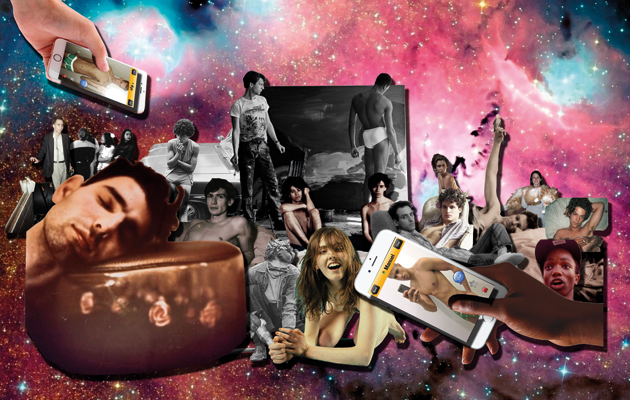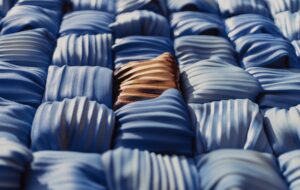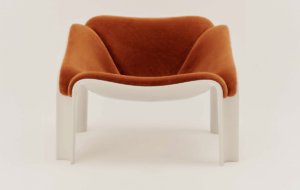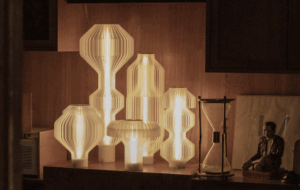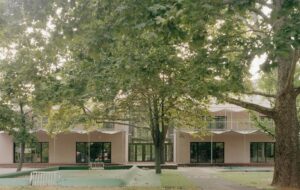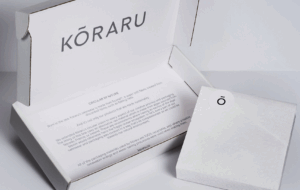|
|
||
|
The Design Museum inaugurates its new John Pawson-designed home next week with Fear and Love, an exhibition that presents 11 installations by world-renowned design practices. Chief curator Justin McGuirk told us more ICON What is the overall message of the Fear and Love exhibition? JUSTIN MCGUIRK The central idea, or attitude, of the exhibition is that design is connected to issues that cause a sense of anxiety in society at large – those issues include the pace of technological change, the state of the environment, the impact of automation. In a sense, the show uses design to look at the state of the world. Traditionally, design might be viewed in terms of taste, or changes in consumer behaviour or new industrial processes – and that is all still very much the case – but this exhibition zooms out, if you like, to focus not on the object but the broader context. What ties the 11 installations together is partly the attitude of the participants, each of whom brings a critical outlook and embraces the complexity of the world as it is today. ICON What brief were the participating designers given? What are some of your personal highlights? Did you find any of the responses particularly surprising or provocative? JM I gave the exhibitors the title of the show, which I’ve always seen as more of a mood than strictly a theme. And I also conveyed my view that design has a more complicated relationship to the world today than perhaps the discipline likes to think – in other words, the traditional rhetoric has design ‘solving a problem’, ‘making the world better’ and so on, but it also has side effects – a disposable consumer culture, waste, pollution. But this is not a pessimistic show – the idea of Fear and Love, if I get more literal than I would like, is that our anxiety exists alongside our optimism and ingenuity. And in each of the installations fear and love co-exist – it’s not that the gallery is divided into two. There are lots of provocative responses. OMA’s for example, makes a very pointed argument about Brexit, proposing that the living room is the product of an idealistic vision of Europe based on free trade and cooperation. Andres Jaque has made a great piece [illustrated above] about how Grindr has transformed social and sexual relations among gay men. Metahaven has made a piece in support of an anti-whaling group that somehow manages also to critique artificial intelligence. I could not have asked for more surprising, engaging and provocative installations. ICON This is the first exhibition at the Design Museum’s new location. Does it provide any clues about the direction in which you, as a curator, hope to take the museum? JM Well I hope it suggests that a design museum is not necessarily a place to go and look at chairs. The show is intended to make clear that the Design Museum is engaged with a rapidly changing world, and with the way the perception of design continues to evolve. My job is to make the museum a destination, and I think the way to do that is to make it central to design conversation and debate. ICON You said in an interview that this will be an ‘exhibition everyone will be able to relate to’. Do you think there’s a need to reach out and speak to people outside the design world more than institutions like the Design Museum have previously? How will this shape your curation strategy? JM Well I think design museums have always reached out one way or the other and in a way they were always eminently relatable because they were presenting things that most people have – by which I mean products, furniture and so on – even if they were better versions of things most people have. The Design Museum certainly aims to speak to people outside of design, but part of the remit of our new home is to grow the audience. My curatorial ambition generally is to make design relevant to people’s lives, but Fear and Love does that in a rather different way: not by asserting that such and such product or building is important for the following reasons but by saying look beyond the object and think about the underlying issues. ICON How does the crowdsourcing project that will also feature at the museum, relate to this? JM I think the crowd-sourced wall of objects in the permanent collection display is interesting because it’s a direct conversation with the public about what design might belong in a museum. The interesting thing to me is that in the mid and late 20th century, when design museums took it upon themselves to educate the public about what ‘good design’ was, they would have advocated exactly the kinds of object that the public nominated – Bic biros and Bialetti Moka coffeepots etc. The strategy seems to have worked. The previous Shad Thames building was opened by Thatcher in 1989, and some have said its content and approach reflected the entrepreneurial, consumerist spirit of the time – the opening exhibition was called ‘Commerce and Culture’. How do you think and hope the new museum and its exhibition do and will reflect today’s politics and concerns? Well I think the shift from one title to another – from Commerce and Culture to Fear and Love – speaks volumes. And that very subtle reference to the opening exhibition is intentional. ICON How do you think the role of a design museum has changed since 1989? JM The DM’s approach to design in 1989 was, as you said, focused on industrially produced consumer goods. The argument was that there was little distinction anymore between high and low, between culture and business, because they were merged through design – that design was culture. To some extent I still believe that, but we are less proud of consumer culture today and design is also about so more that making products. I see the museum as a place that accommodates multiple perspectives of what design is, representing a broad spectrum of disciplines and attitudes. The Design Museum opens to the public on 24 November 2016. Read our take on the new building in our next issue |
|
|

